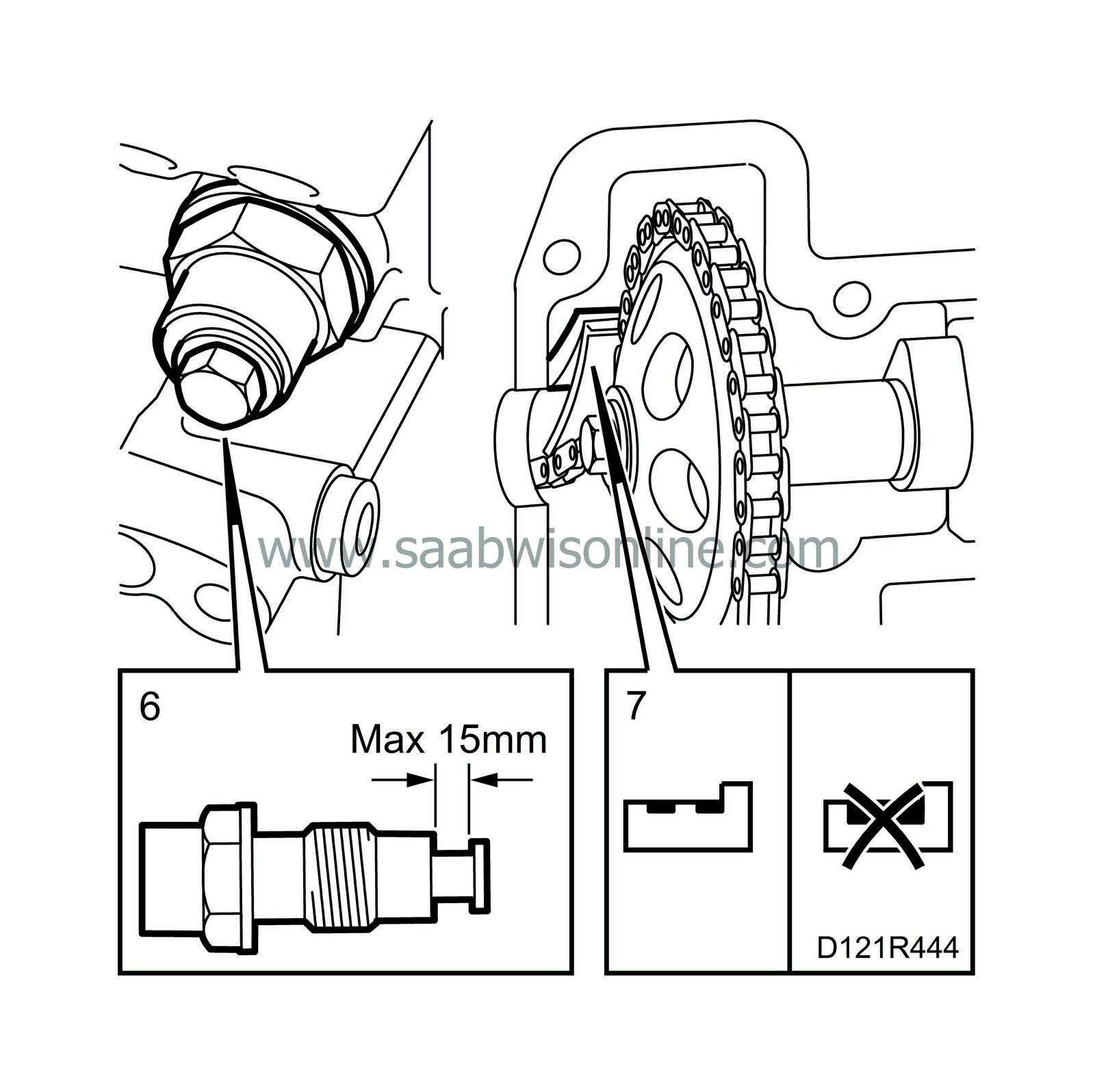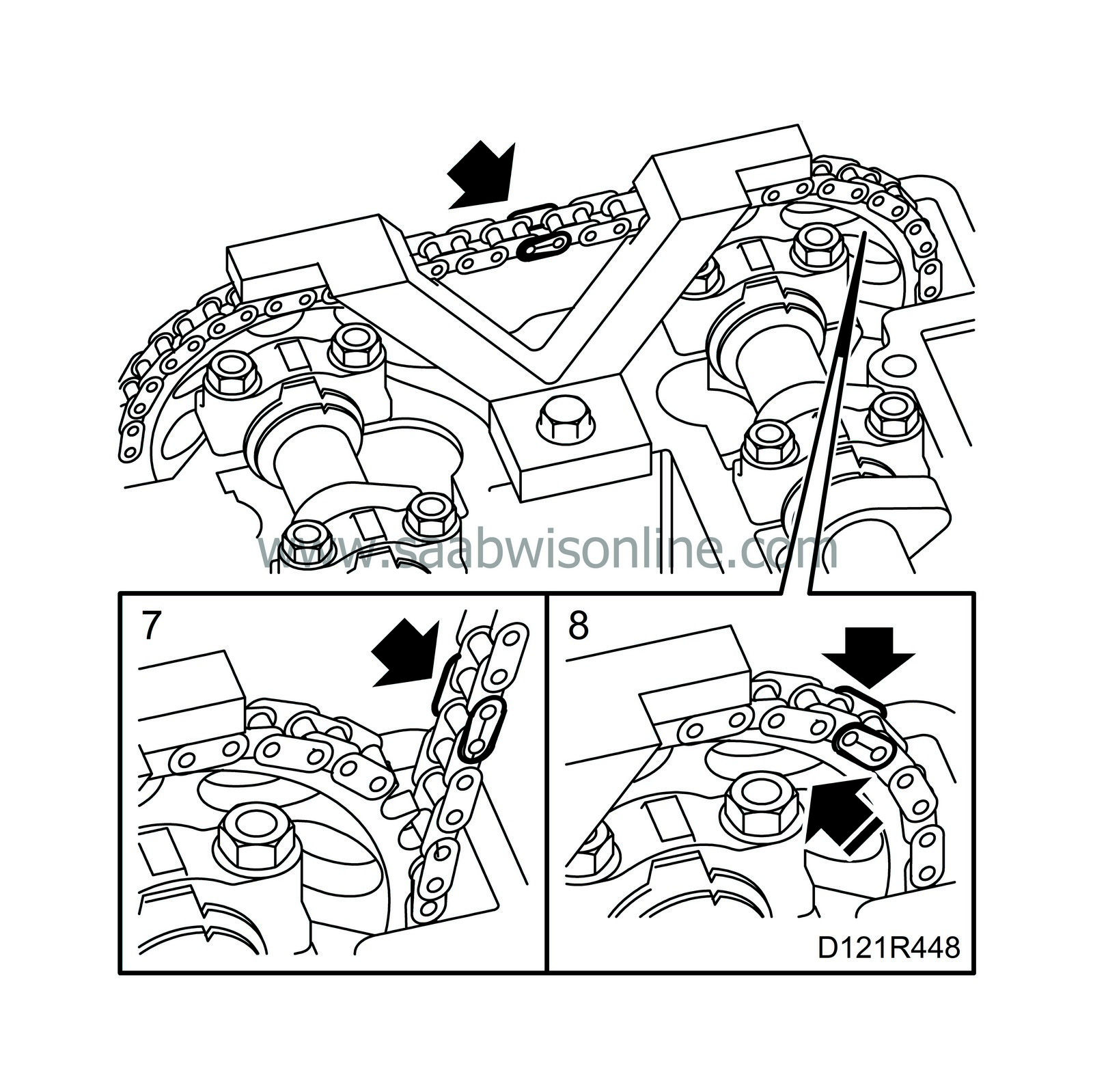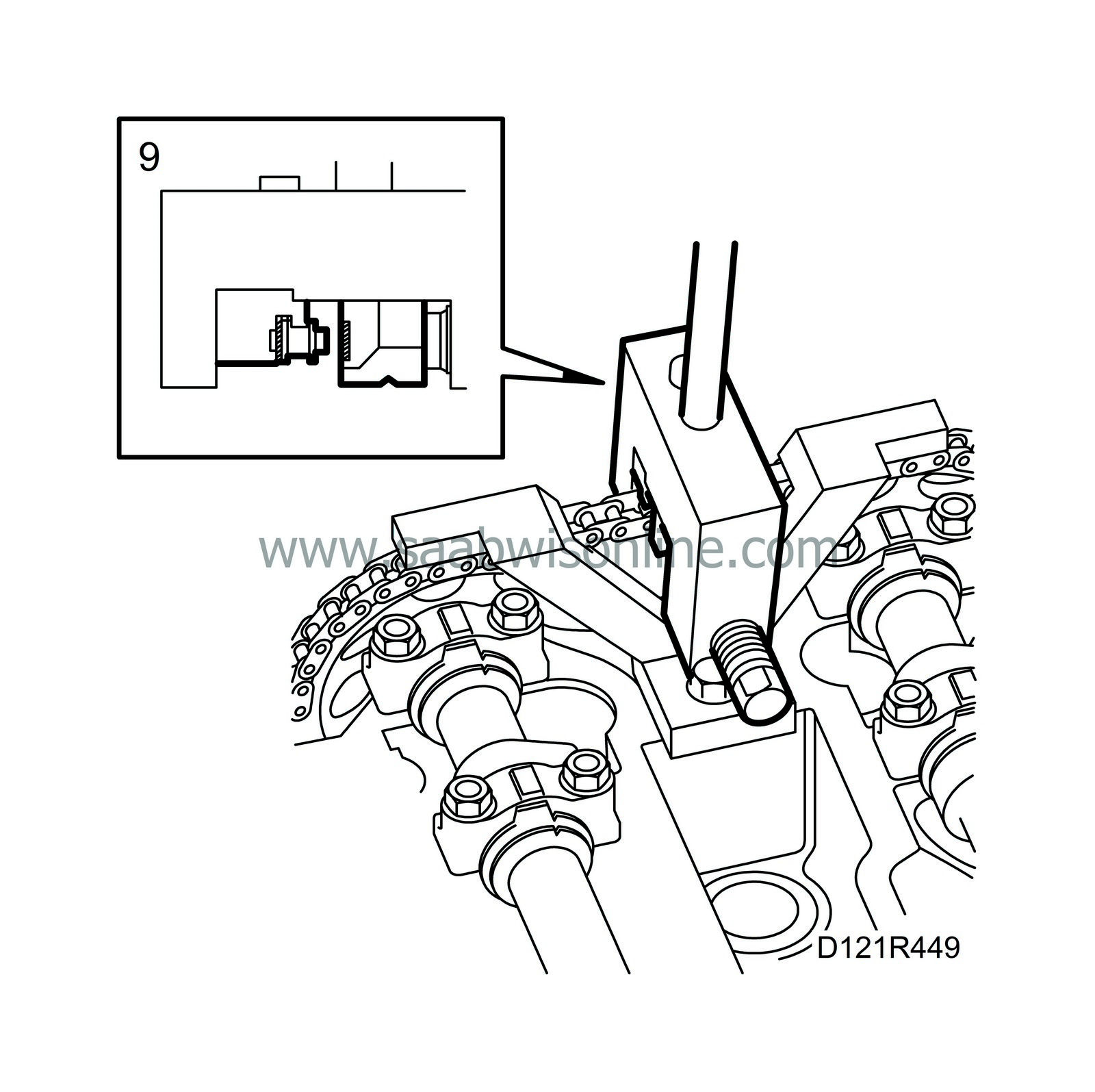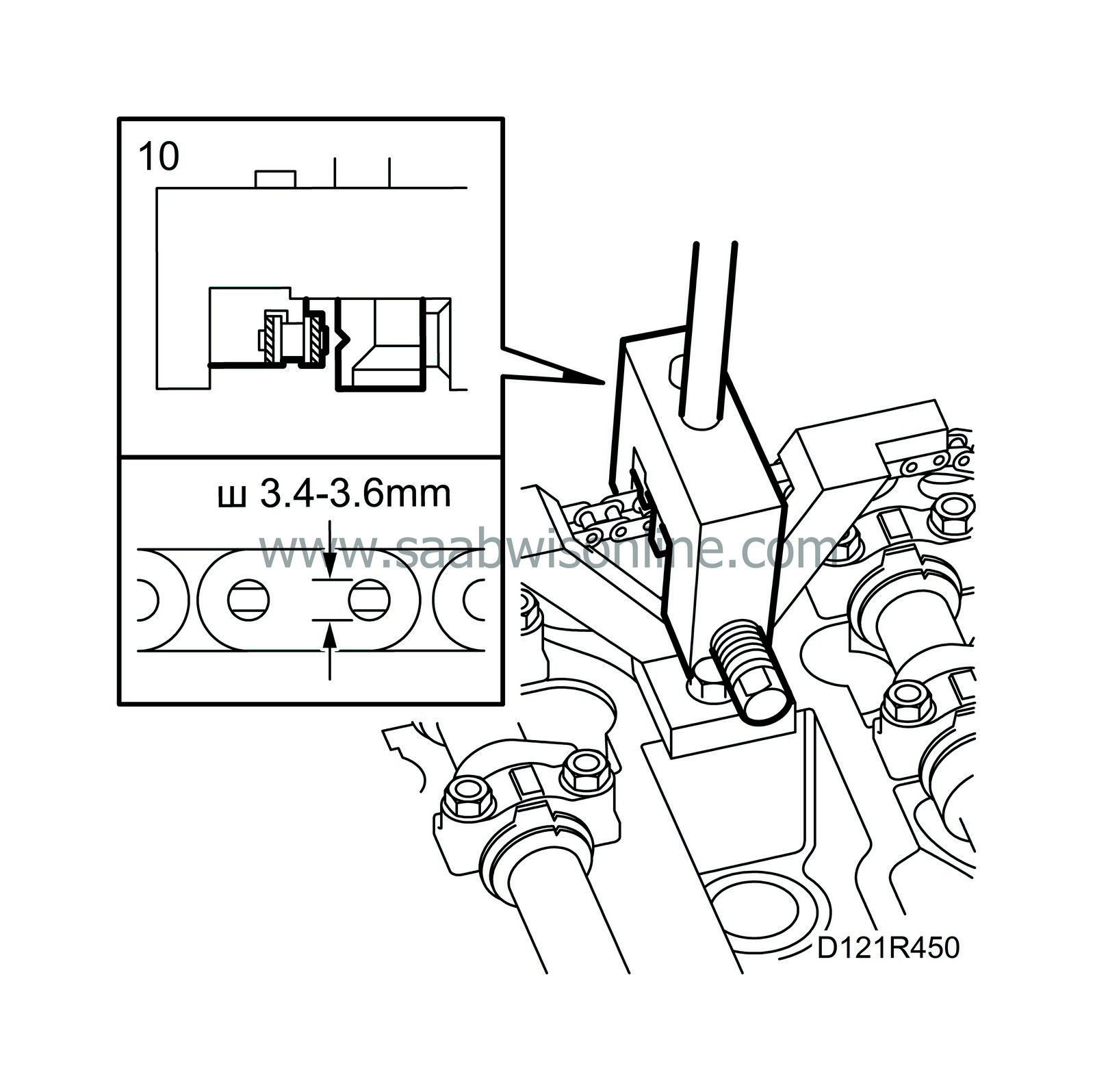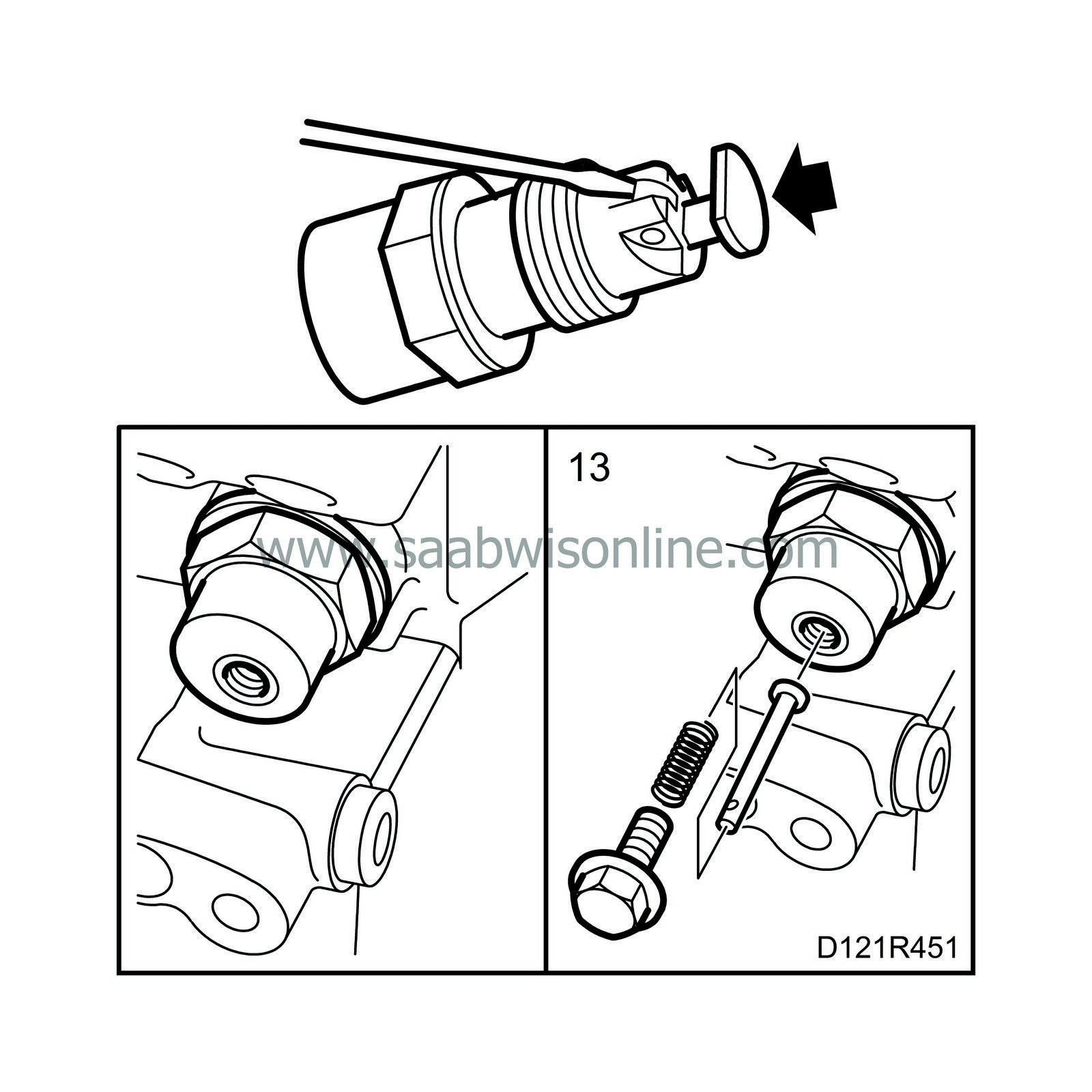Changing the timing chain (in situ)
| Changing the timing chain (in situ) |
| To remove (in car) |
| 1. |
Raise the car and remove the belt circuit cover.
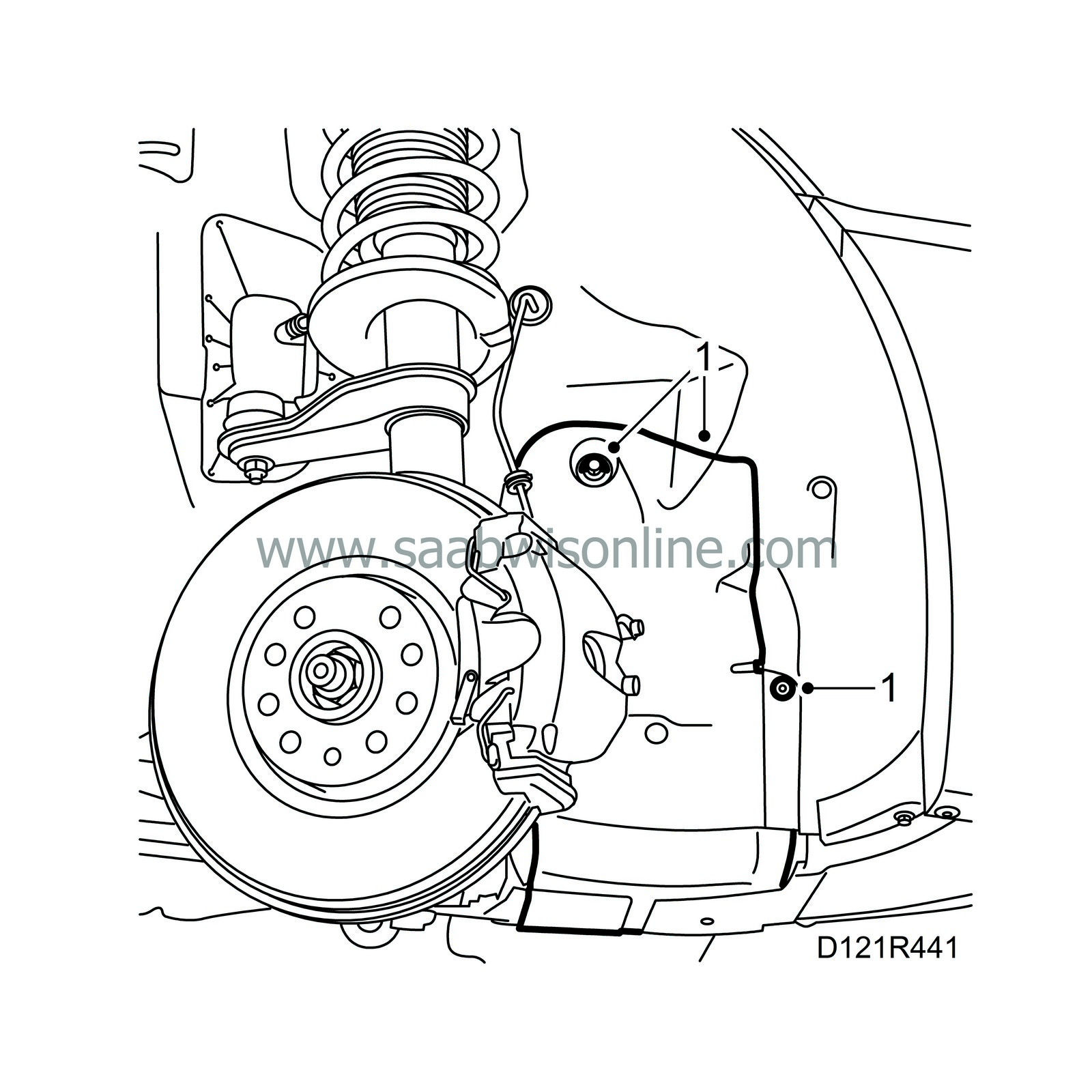
|
|
| 2. |
Lower the car and remove the upper engine cover.
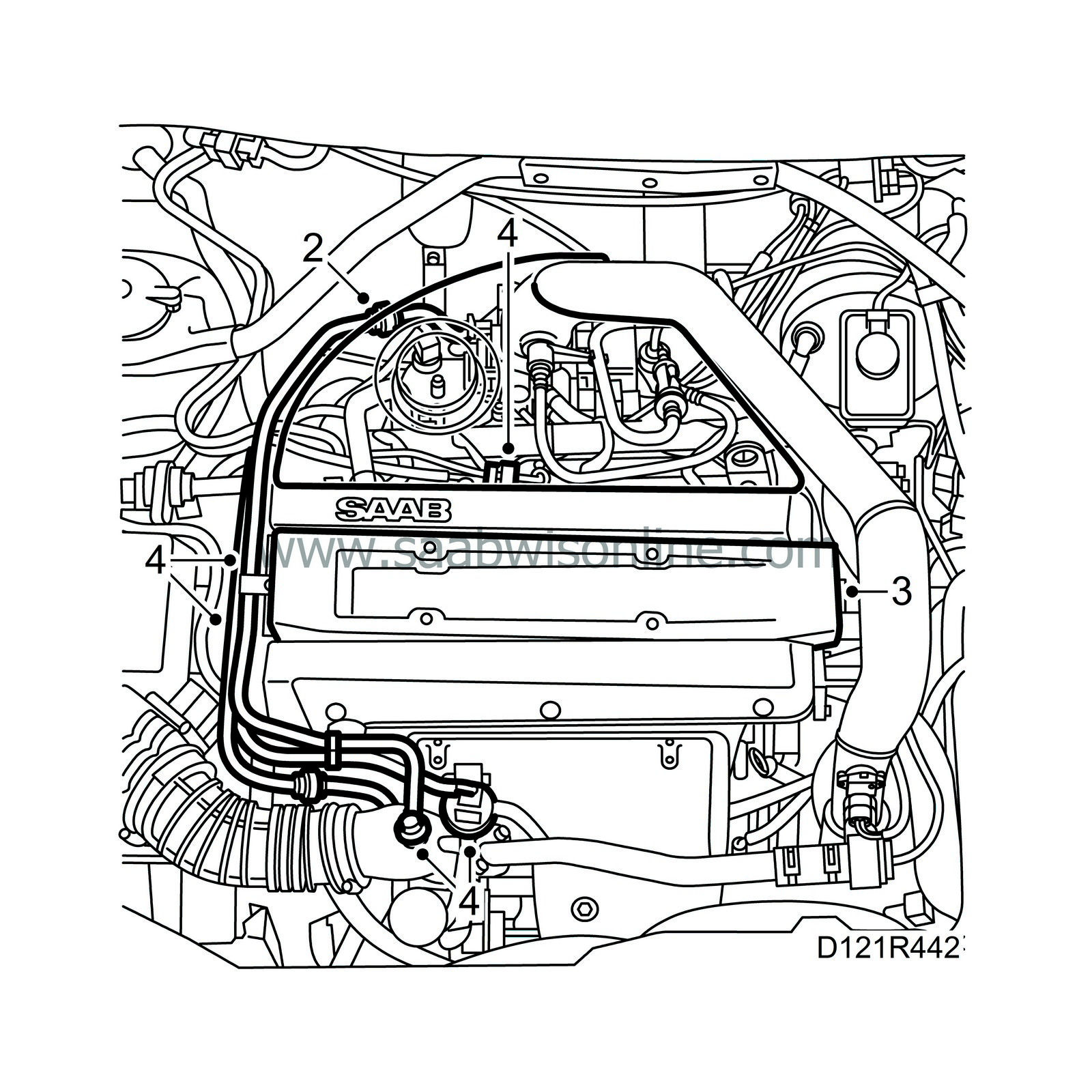
|
|
| 3. |
Remove the ignition discharge module and spark plugs.
|
|
| 4. |
Detach the crankcase ventilation pipe and hose. Cut the cable tie holding the non-return valve. Unplug the boost pressure control valve and remove the camshaft cover.
|
|
| 5. |
Turn the crankshaft clockwise until the crankshaft and camshafts are aligned with their setting marks.
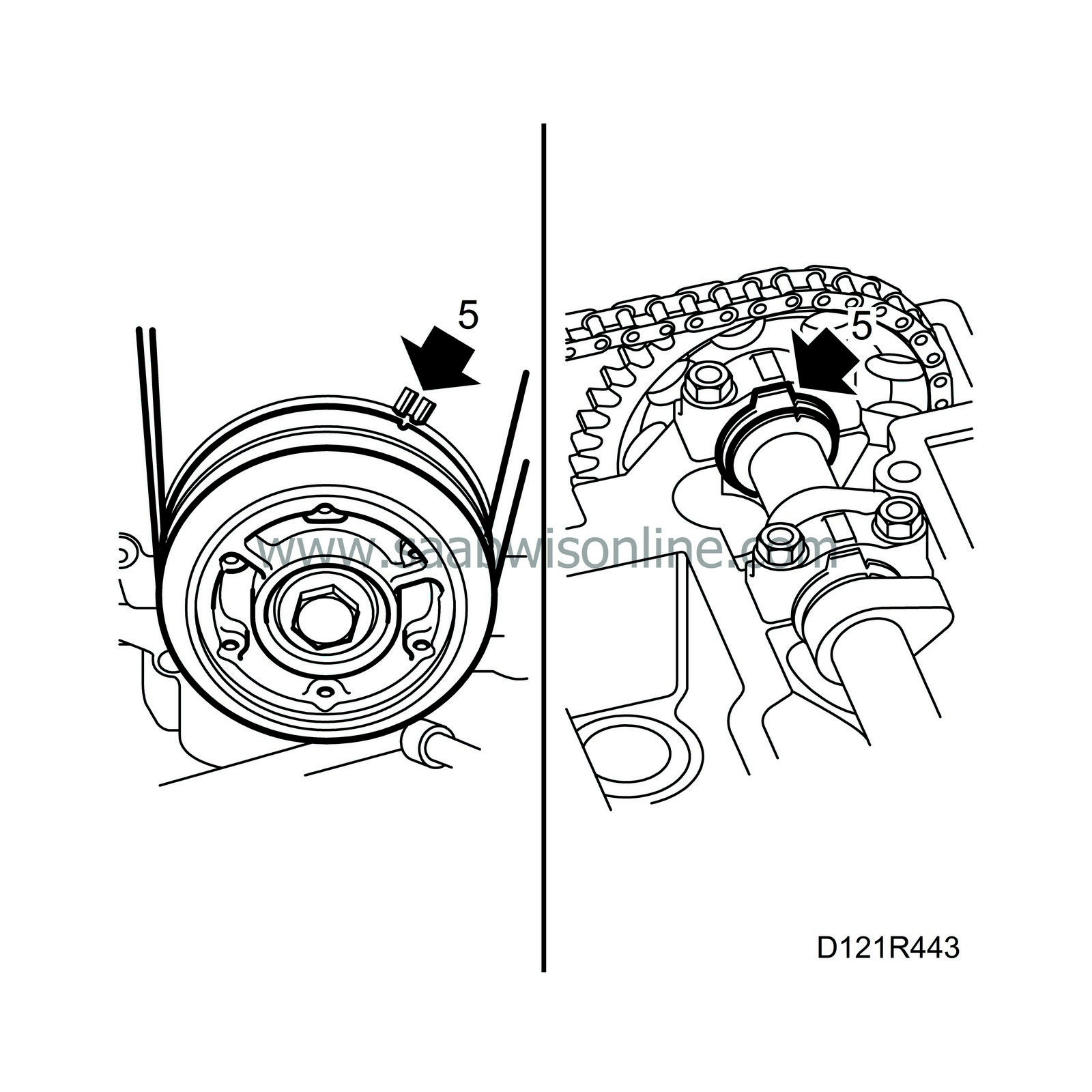
|
|
| 7. |
Check the wear on chain sprockets and chain guide. Chain guide wear must not be so great that the chain acts on the surface between the outer tracks. If the surface between the outer tracks shows signs of wear, they must also be replaced and the chain changed in the usual manner.
|
|
| To fit (in car) |
| 1. |
Stuff a cloth in the area round the chain and also secure the chain with cable ties on both sides.
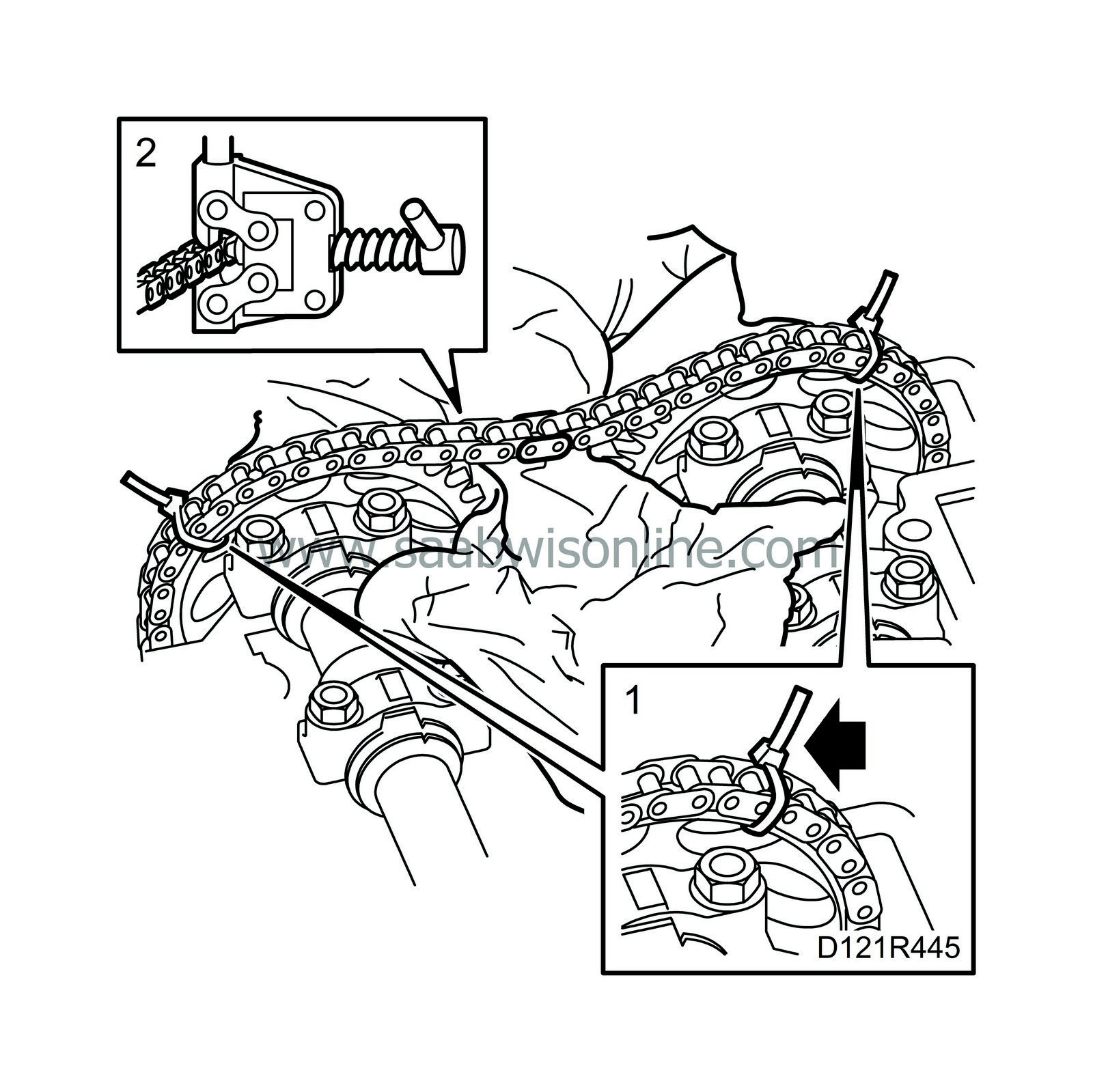
|
|
| 2. |
Split the chain by pressing out a link using
83 94 678 Kit for changing timing chain
and then remove the link using pliers. Attach a cable tie to the end of the old chain.
|
|
| 3. |
Connect the new chain to the old one with the link in the
83 94 678 Kit for changing timing chain
. Be careful to make sure that the chain does not fall down!
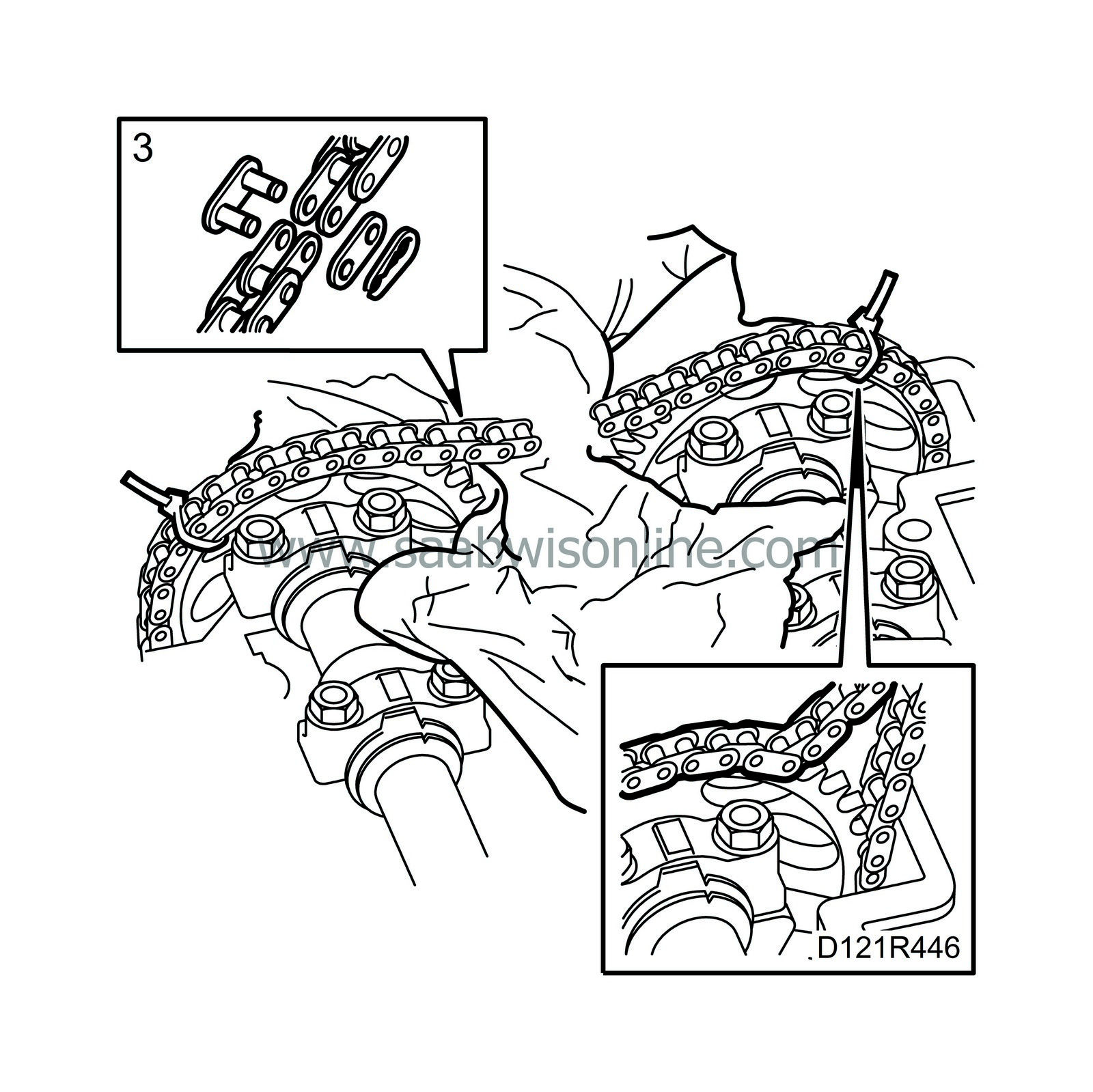
|
|
| 4. |
Make sure that the new chain lies over the camshaft sprockets on the intake side.
|
|
| 5. |
Fit the chain support from
83 94 678 Kit for changing timing chain
and remove the cloth and cable ties from the camshaft sprockets.
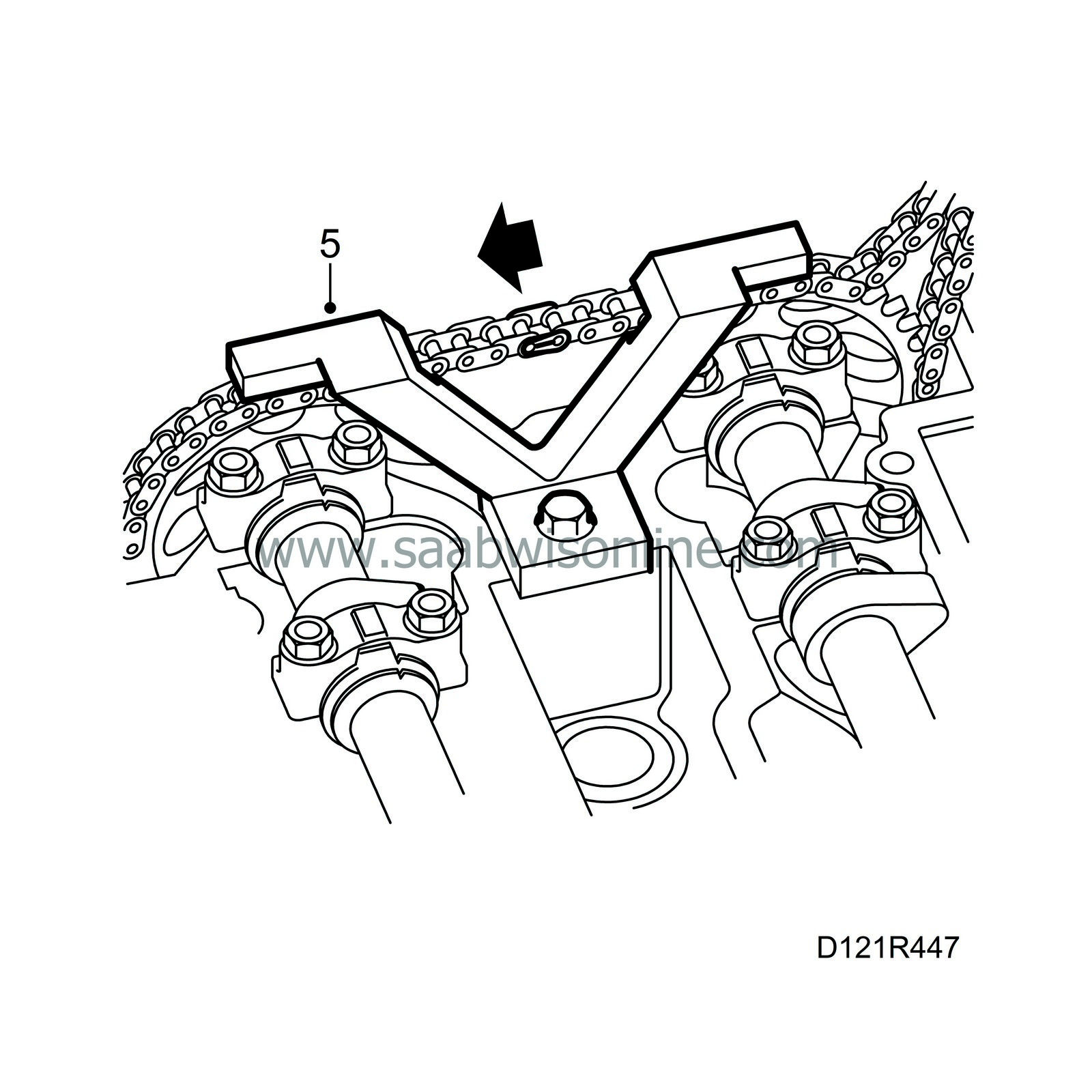
|
|
| 6. |
With the old chain in your hand and the new one resting over your hand, carefully feed in the new chain while a helper slowly turns the crankshaft.
|
||||||||||
| 8. |
Connect the ends of the new chain together with a chain link and remove the cable tie and cloth. Pull the chain round until the link is midway between the shanks of the chain support.
|
|
| 11. |
Check the riveting by checking the compressed shank diameter with a vernier caliper. The correct diameter is Ø 3.4-3.6 mm.
|
|
| 12. |
Remove the cloth and shank support.
|
|
| 14. |
Turn the engine over two turns and check the 0 marks of the camshafts and crankshaft.
|
|
| 15. |
Wash the cylinder head gasket surface with benzene and oil the four recesses with engine oil.
|
|
| 16. |
Fit the camshaft cover as shown in the illustration.
Tightening torque 15 Nm (11 lbf ft) |
|
| 17. |
Fit the spark plugs.
Tightening torque 28 Nm (21 lbf ft) |
|
| 18. |
Fit the ignition discharge module and connector.
Tightening torque 11 Nm (8 lbf ft) 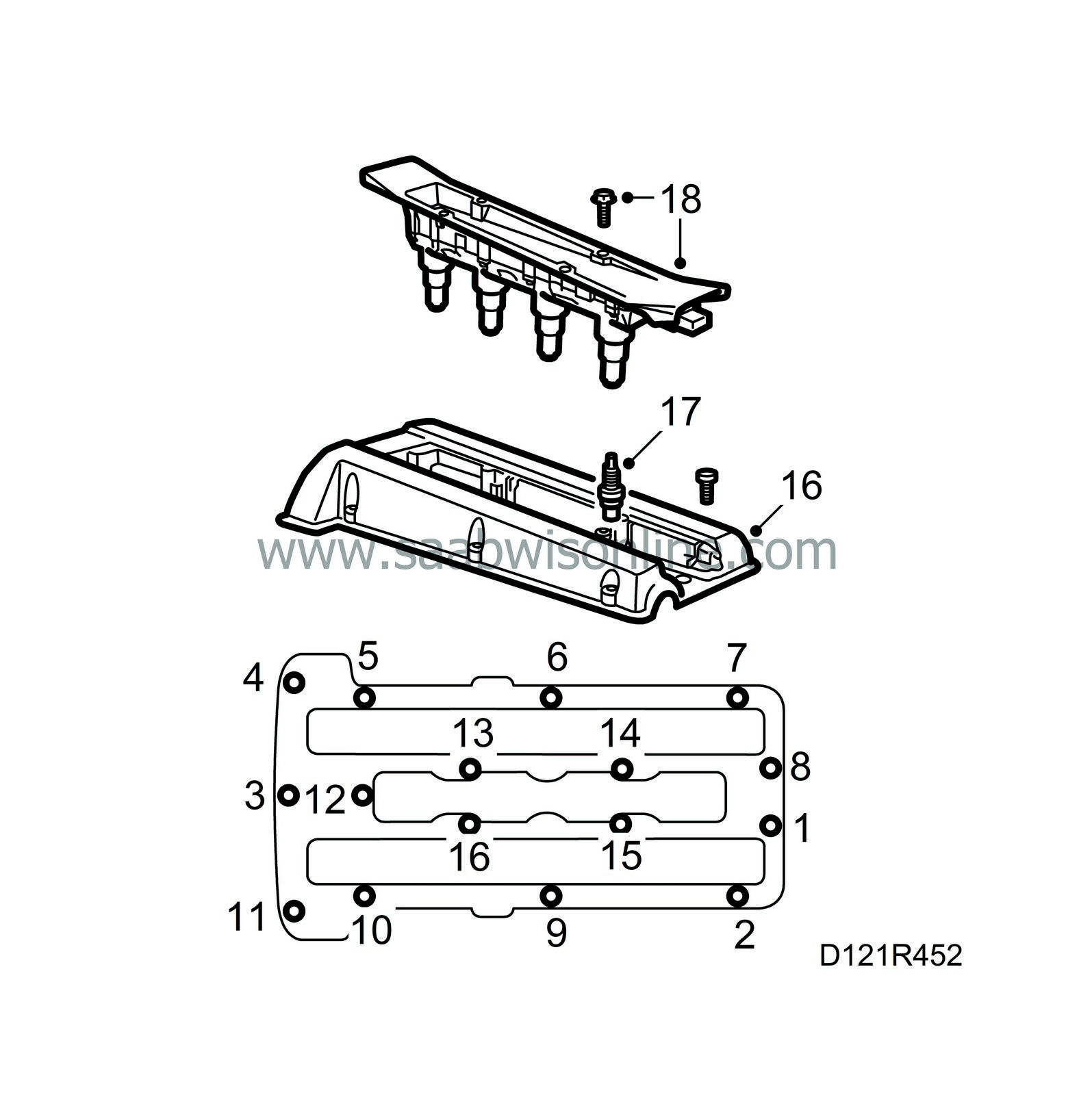
|
|
| 19. |
Fit the crankcase ventilation hose and pipe. Secure the check valve with a cable tie.
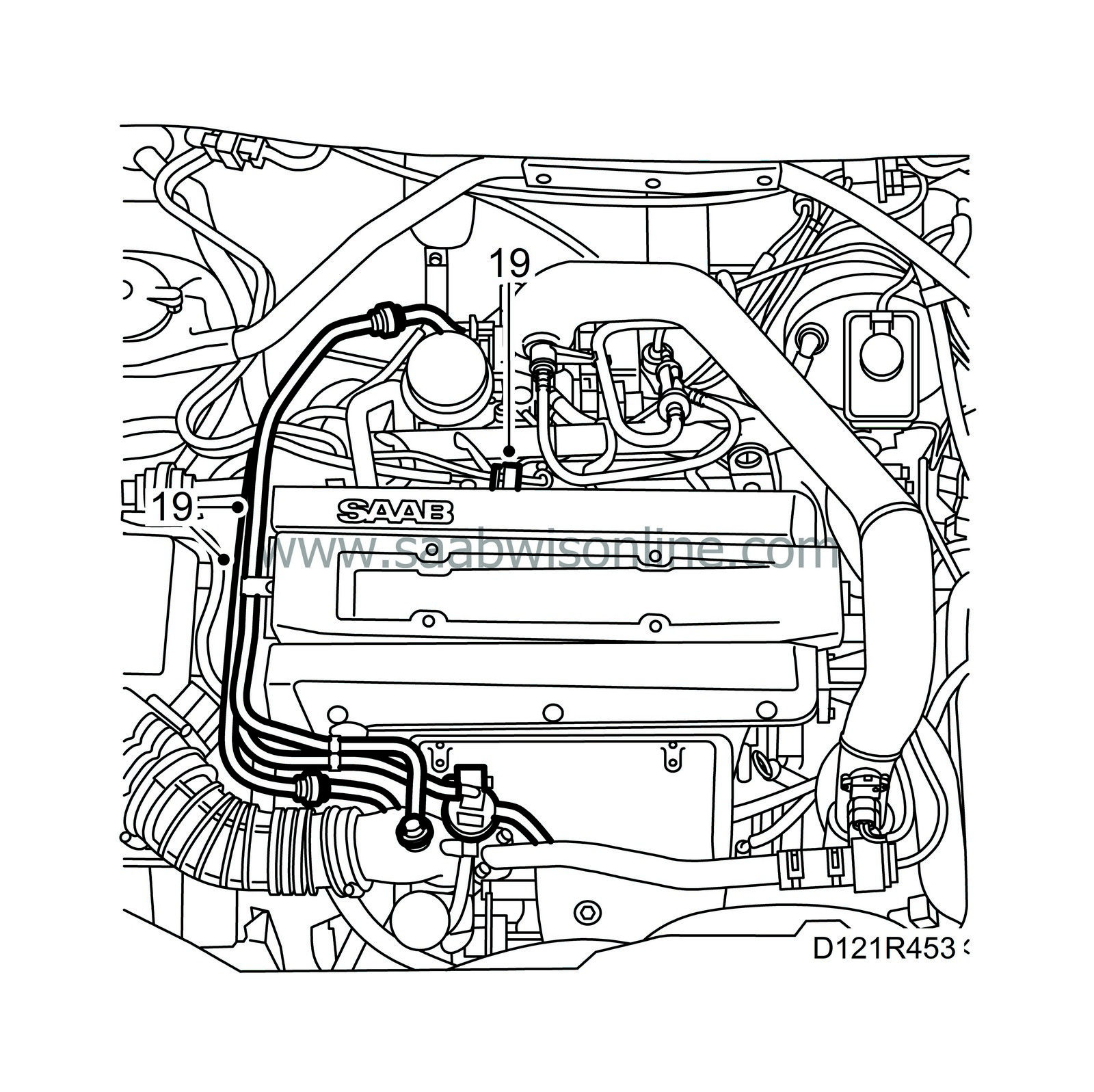
|
|
| 20. |
Raise the care and fit the belt circuit cover.
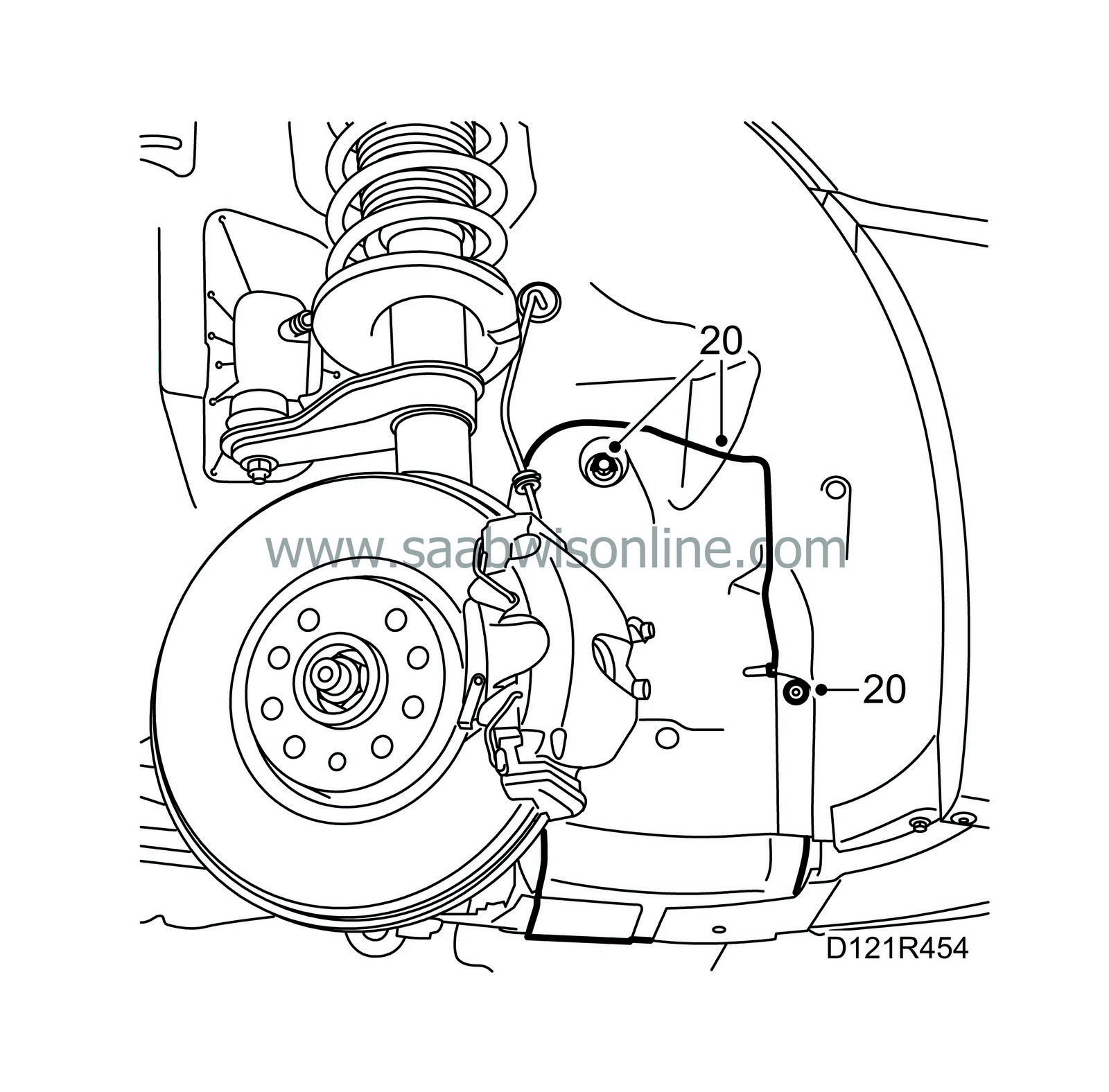
|
|
| 21. |
Lower the car and fit the upper engine cover.
|
|

